
(C) Copyright 2000
Muhammed Asadi
Permission to reproduce this article will be granted on receipt of a written request provided: the source(s) and author is acknowledged, linked to and no alterations made to the text.

(C) Copyright 2000
Muhammed
Asadi
Permission to reproduce this
article will be granted on receipt of a written request provided: the source(s)
and author is acknowledged, linked to and no alterations made to the text.






As the continuous drift towards
war becomes a permanent way of life, institutions that describe our lives are
altered for its accommodation. By placing facts within their institutional
context, this book uncovers the intricate connections between the
military/economic alliance in America and the resulting globalization of
poverty. Using the depth of the sociological imagination, the author provides a
picture of reality that is often overlooked by journalists and commentators who
routinely report facts detached from their sociological roots.



Howard Zinn narrates his observation, on his way to England, on the Queen Mary.
Here, on a passenger liner, there existed the clearest evidence of an
artificially created "Third World", inside the "First":
In
the late Middle Ages, different regions of the world were almost equally
developed (Alexander 1996:17). Then, in a
course of a few hundred years, Western economic and political domination in the
world led to pockets of development and underdevelopment, wealth and poverty,
coexisting in close proximity to each other. A clear pattern emerged on a global
and local scale. The emerging dominant philosophy was Capitalism, the driving
force behind which was competition, based on ideas similar to Social
Darwinism. As a result, an ideology of superiority emerged within the ruling
elite, an idea that led to the patterned underdevelopment of certain groups of
people on a local and global scale within the interconnected World
System.
"My air crew sailed to England on the Queen
Mary. The elegant passenger liner had been converted into a troop ship. There
were 16000 men aboard, and 4000 of them were black. The whites had quarters on
the deck and just below the deck. The blacks were housed separately, deep in the
holds of the ship, around the engine room, in the darkest dirtiest sections.
Meals were taken in four shifts (except for the officers, who ate in prewar
Queen Mary style, in a chandeliered ballroom- the war was not being fought to
disturb class privilege), and the blacks had to wait until three shifts of
whites had finished eating." (Zinn 1990:88)

The nation-state was central to Western economic
and political domination (Alexander 1996). Nationalism on a global scale can be
compared to racism within states: Both are driven by an ideology that assumes
superiority of one group over another. This linkage is clearly evident in the
relationship between the West and the "Third World and race relations between
white and black communities in the United States. During the Vietnam War, US forces massacred whole
villages; murdered prisoners of war; set up "free fire zones" in which all
living things were subjected to annihilation; systematically bombed all
edifices, including hospitals, schools, churches and destroyed croplands and
work animals"The CIA director of that day, Richard Helms, admitted that 20,500
persons were assassinated by the CIA sponsored Phoenix Program"In Vietnam, the
US dropped 8 million tons of bombs (leaving 21 million bomb craters), and nearly
400,000 tons of Napalm"The 18 million gallons of Agent Orange and other such
chemical defoliants dumped from US planes poisoned hundreds of thousands of
acres and worked their way into Vietnam"s food-chain, dramatically increasing
the number of miscarriages, still births and birth deformities. The chemical
warfare gave Vietnam one of the world"s highest rates of liver cancer, a disease
virtually unknown in the country in prewar days. The continuous bombing and use
of napalm and defoliants rendered two-fifths of Vietnam"s land unsuitable for
forestry or agriculture. (Parenti 1989: 44)
Wars continued (after World War 2), which the
superpowers either initiated or fed with military aid or observed without any
attempt to halt them. Two million people died in Korea; 2 to 5 million in
Vietnam, Cambodia and Laos; one million in Indonesia; perhaps 2 million in the
Nigerian Civil War; one million in the Iran-Iraq war; and many more in Latin
America, Africa and the Middle East. It is estimated that in the forty years
after 1945; there were 150 wars, with 20 million casualties. (Zinn 1990: 99)
Ideas of race
superiority, made moral by a hierarchical religion, "whitewashed" to reflect the
preference of the rulers, became institutionalized in Western culture once
Germanic races gained power by overthrowing the Roman Empire and adopting
Christianity. By the 1900s, the colonial powers of Europe, together with the
U.S, controlled half of what they described as "newly discovered" areas of the
world, and over a third of its population (Delavignette 1964:1).
This
idea of superiority led to the "race-specific" Atlantic slave trade in which
over 40 million people were killed. A similar idea led to the genocide of the
American Indians and other indigenous groups in all these "newly discovered"
white-settler areas, over 50 million "savages" were killed by the "civilized"
West (Zinn 1990:1). American "National security" sanitized by ideas about "our
superior way of life," led to the civilian bombings of Vietnam and Cambodia by
orders of Harvard educated elite, killing millions again. South Africa similarly
used "national sovereignty," as an excuse to protect its apartheid regime.
The fate of the Australian Aborigines,
persecuted, killed and forced on reservations was another racially motivated
national act. "Turning the other cheek", pulling out peacekeepers, and not
stopping the genocide when 800,000 Tutsis were killed by the Hutu militia in
Rwanda, at the rate of 10,000 per day, in 1994, provides further evidence of
non-Western lives being unimportant, to the elite and their "democratic"
system.
Colonization and the artificial drawing of borders displaced and
killed millions of poverty stricken people in India. The drawing of arbitrary
borders, similar to neighborhood displacement within the developed world, cut
the lifelines of many groups and communities. European wars among themselves,
the First and the Second World War similarly destroyed millions and plundered
the earth.
This is the nature of racism in the modern
world. Under the cloak of nationalism it has killed and caused suffering to more
people in the course of a few hundred years than any other single factor in the
entire history of humankind.
Let me clarify my use of the word "West" and
"Third World" in this paper. When I say "West", I mean the white- male elite,
(of European origin) who command decisions in the world and not the masses of
the white world. Contrary to that, when "Third World" is mentioned, the masses
are referred to and not the elite that supposedly rule over these countries. The
elite in most of these countries are a part of the "second-tier" West, a legacy
of colonialism, intermediaries that translate the Western cause in perpetuating
"Third World" Poverty. They are as far removed from their people, as the culture
of the ghetto is from suburban America.
"Internal Colonialism" signifies
the network of "coercive legal, political and economic
constrains imposed on racial ethnic minorities and indigenous peoples in settler
societies".Key to internal colonialism is a set of features that facilitate the
exploitation of minorities as workers- segmented labor markets, separate wage
scales and state and employer-imposed discriminatory practices" (Ed.
Stasiulis et al 1995:12).
It operates within the
communities just like neo-colonialism operates on a global scale.
The
"West" (also called the North or the "core"), traditionally signified European
Christian nations. The term nowadays has expanded to include the United States,
the industrial states of Western Europe and Japan. Until 1990, the Soviet Union
and its Eastern European colonies were excluded from the "First World" and
became an intermediate division. The term "Third World"(also called the South or
the Periphery) was invented to signify underprivileged countries, mainly Asian
and African, as against the first two (Fieldhouse 1999).
Wallerstein
(1974) whose name is associated with the World Systems Theory suggested that
since the 16th century, with the rise of Capitalism, the world market was
purposefully transformed into a group of core countries (those who were former
colonizers and who control capital and material wealth in the world) and a set
of peripheral countries (the rest of the world). Until Japan entered the group
of core nations recently, white male elite controlled the world almost
exclusively in the postcolonial era, as they did in colonial times.
The
peripheral countries in order to become part of the global economic system,
which was deliberately designed to serve the core nations, had to become
dependant on them and their provision of developmental resources. The Core
exploits the Periphery for cheap resources, which are exchanged for either
expensive military goods or overpriced capital. Political instability and
poverty is concentrated in the Periphery to keep this global order intact. This
ensures that the periphery remains in its subordinate position. In short, this
was the reason for the birth of a few affluent nations, controlled by white male
elite, surrounded by a poverty-stricken "Third World", a world where almost
everyone is non-white.

The World Systems
Theory can be extended to include segregation and
sub-urbanization within the United States as well. In the U.S from 1920 through
the 1960s, sub-urbanization continued unabated (Weeks 2000:419), America is now
predominantly suburban and the suburbs are predominantly white. Suburbs are the
"core" where edge cities have led to the replacement of the central city's
dominant position. The central city has become the periphery where minorities,
especially African Americans are concentrated. This has led to the development
of the ghetto and the birth of the "underclass."
In the past few decades
with the rise of the so-called Asian Tigers and the oil rich countries of the
Middle East a new group, the "semi-peripheral" countries have entered the World
System. These countries are linked to the core but have loose (mostly labor)
connections with the majority "peripheral" world. Similar to what Marx would
call the petty bourgeoisie, they serve the core in keeping the periphery poor,
having aspirations of entering the "core" status by such service. A similar
phenomenon was seen in the development of the ghetto in the United States.
Massey and Denton (1993) state:
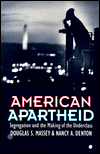
"The rise of the ghetto, more than anything else,
brought about the eclipse of the old elite of integrationist blacks who
dominated African American affairs in the northern cities before 1910"the
(profit) interest of these "New Negroes" economic and political leaders were
tied to the ghetto and its concerns (Massey & Denton 1993:40)." It is
implicitly acknowledged and "politely" enforced by the West that white Christian
nations are superior to all others and are "God-appointed" leaders. The German
sociologist Max Weber stated: Behind all ethnic diversities, there is somehow
naturally the notion of a "chosen people""the idea of a chosen people derives
its popularity from the fact that it can be claimed to an equal degree by any
and every member of the mutually despising groups (Ed. Vanhorne 1997:116) "Third World" & the
Underclass:
The ideology that led to the invention
of the term "Third World" similarly led to the invention of the term
"underclass" in America; a nation otherwise advertised as "classless" (Hadjor
1993:129). The underclass described by the conservative section of society
signifies a group completely removed from mainstream America. Here alien and
"odd" norms prevail, similar to "Third World" culture, which to many
conservatives threatens what is described as "our way of life".
According to them, the members of the "underclass" have a "foreign" or
"alien" family structure (as described by The Moynihan
Report) with a backward "code of the streets", far removed
from the "normal" American "way of life". Their language is as "foreign" as
Arabic or other "Third World" languages. It is seen as a section of society
where chronic poverty, homelessness, crime, drugs, and disease have reached
epidemic proportions, similar to and sometimes worse than the "Third World"(4).
The people living in such a section of society are not termed "aliens" like
people from the "Third World" but are completely alienated from the outside
world (like the "Third World" and its problems from the affluent West) and the
outside world is completely alienated from them.
If anyone from this part
of society were to go to the "outside" world, to one of the big shopping malls
in the affluent white suburbs, "polite" racism and what can be called
"conspicuous supervision" will keep him or her out of public areas. Access is
restricted and clearly marked by "borders" of tolerance, similar to borders that
separate nations. A few decades back, borders were physically marked by
"red-lines" on bank maps. Today, those paper maps have been replaced by "mental
mapping". Bank statistics, in poor neighborhoods, reveals that red lining is
still alive and well.
"Racial profiling" ensures that these borders are
respected and crossing them can lead to swift "justice" like countless "Rodney
King" cases, all through the nation. Similarly, for the "Third World", strict
visa and immigration laws, to keep the "barbarians" from reaching "the gate",
deportations, and detaining people on "secret-evidence" and "swift-justice"
against "rogue nations", ensures much
the same. National security is used as an excuse to curb the de-jure civil
rights of minorities and to militarily solve economic problems that threaten the
hegemony of the core. The capitalist elite, the owners of tobacco and alcohol
industries, collectively kill over 250,000 American and millions more around the
world, yet the system doesn"t declare "war" on them. The so called "just wars"
all through the 20th century have killed 80-90 percent civilians.
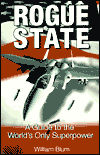
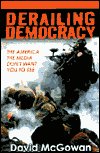
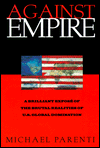
The
appearance and incidence of the geographic region inhabited by the "underclass"
has become an ecological pattern, being found in all major cities in the United
States, in contrast to the affluent white suburbs. This is alarmingly similar to
the incidence and appearance of poverty in the "Third World" compared to the
affluent white "settler societies" like Australia etc. These areas once used to
be prosperous business districts and now are urban wastelands like the "Third
World" after colonization, due to strategic population and job displacement.
"The Holy Bible in the White man"s hands and his
interpretations of it, have been the greatest ideological weapon for enslaving
millions of non-white human beings (Malcolm X, as quoted by Alex Haley
(1973:241-242)."
Racism of the modern type only began in the 15th
century, when Portuguese ships began to outflank Islamic power by sailing around
the coast of West Africa. They started kidnapping anyone they could find and
taking them back to Portugal to sell as slaves. Their justification for this was
that they were prisoners of a just war, and any war fought by Christians against
non-Christians qualified as a just war. Quite soon however a new justification
grew up"Africans were claimed to be slavish by nature"The new racists tried to
enlist religious backing for their ideological requirements..(Ed. Vanhorne
1997:83) Once the government, ignoring democratic
procedures, gets the nation into war, it creates an atmosphere in which
criticism of the war may be punished by imprisonment- as happened in the Civil
War and in both world wars. Thus democracy gets a double defeat in matters of
war and peace (Zinn 1990:124) Max Weber in his writings on power and opposition implies that it
would be very difficult (and expensive) for a group to embark on a continuous
struggle to control others. If however the position of that group can be
institutionalized, opposition becomes muted. Religion served as a vehicle to
institutionalize racism. Political scientist, Clarence Stone calls this type of
power to institutionalize a group"s advantages, ecological
power (Abrahamson 1996:27). "And thus are appointed, in every city, elite ones
of its malicious people, and they plot therein". (Koran 6:123)
The
elite targets their "persuasion" resources specifically towards existing
influential institutions, for greater impact. Where religion is influential, the
elite use it to legitimize their benefits, sometimes politically
institutionalizing a distorted version of it. The culture of the elite and the
structures created by such a culture are projected upon society in a
contradictory manner in order to "legitimize" the norms that help maintain the
status quo (Castells 1987:184). Poverty, prostitution and delinquency are
structurally perpetuated and implicitly encouraged to display to the masses the
consequences of an "alternative" culture. Control of the media and superior
access to the masses, by such control of information technology, ensures
socialization of this "created" culture. Alienation is unavoidable in such a
system. "It is nothing less than the cultural manifestation of persistent
urban poverty. It is a mean adaptation to blocked opportunities and profound
lack, a grotesque form of coping by young people constantly undermined by a
social system that historically has limited their social options and until
recently rejected their claims to full citizenship (Anderson 1999:146-147)."
Those
who refuse this subjugation through this "structural" alienation are offered
"chemical alienation" through alcohol and drugs" (8), which chemically produce
temporary bouts of "anomie", i.e. normlessness and alienation"(9). As a result
of this "created" culture, a "real world" much removed from the actual real
world is projected. A world that traps people in a cycle, the so-called "culture
of poverty", from which escape becomes almost impossible: "Their example is as a mirage in a desert. The
thirsty one supposes it to be water till he comes unto it and finds nothing"or
as shadows upon a sea obscure: there covers them a wave, above which is a wave,
above which are clouds; layer upon layer of darkness. When they hold out their
hands, they almost cannot see them (Koran 24:39-40)" This
is the reality of existence for a majority of humankind. What we consider "real"
and "natural" are at times artificially engineered and socially constructed
illusions, perpetuated by institutions designed by the elite to serve their
economic and political goals. This
"dehumanizing" of African Americans began with European voyagers traveling to
Africa in the 16th century. They observed, what according to them seemed like
"pathologies" of Africans. Richard Hakluyt, an early English historian wrote:
" They (the Africans) are black, beastly,
mysterious, heathenish, libidinous, evil lazy and smelly people who are
strangely different to our superior white race (as quoted by Griffin 1999:14).
" How
the same images are perpetuated even today, is witnessed in so called
"government studies". President Nixon"s appointed chair of the "Model Cities
Program," commented on the "lower class" city dwellers, who were predominantly
black: "The lower class individual lives from moment to
moment"impulse governs his behavior. He is therefore radically improvident.
Whatever he can"t use immediately, he considers valueless. His bodily needs
(especially for sex) and his taste for action take precedence over everything
else"He works only as he must to stay alive"(as quoted by Griffin
1999:74)" It is
as if Hakluyt had been resurrected. If we replace the word, "lower-class" with
"African", the two descriptions are almost identical. A clarification needs to
be made at this point about the "family structure" of African Americans. It is
true that single parent, female-headed households are a big problem in African
American communities, but the growth rate of "new" cases is lower for African
Americans than for white communities (Smith 1998). Whereas the break-up of the
family, in the case of African Americans was a direct legacy of slavery, the
breakup of the white family may be attributed to a careless attitude towards sex
and marriage, the "popular" culture of the "Hollywood" elite. Thus the
"morality" issue is forcibly imposed on African Americans instead of on the
white "moral majority". Ronald Reagan, one of the most popular presidents in recent history,
is well known for his ideological battle with the African American minority.
Blaming the poorest, most powerless sections of society for its greatest evils,
he drastically cut government funding in public services in the inner cities,
leading to a sharp jump in homelessness, inner city riots and brutal police
crackdowns. In the "Obi wan" style, Regan, based on his white Christian
"superiority" ideology went so far as calling the Soviet Union, an "evil"
empire, and used the medieval term "Barbarians" to describe Arabs and Muslims
(Heinman 1998:145). During the Regan administration of the 1980s, the
country"s rich became richer and the poor, poorer. Regan"s attorney general,
Edwin Meese, said cheerfully he was not aware of people being hungry. Around the
time he was saying this a Physicians Task Force reported that 15 million
American families had incomes of under $10,000 a year, receiving no food stamps
and were chronically unable to get adequate food. A report by the Harvard School
of Public Health in 1984 said that its researchers found that over 30,000 people
had to beg for food to avoid starvation (Zinn 1990:149) In
1854 Josiah Nott published a book, in which he claimed, based on his
pseudo-science, that Caucasians (White) races have the largest brains and the
most powerful intellect (Griffin 1999:51). Following in the same tradition,
Charles Murray and Richard Herrnstein authored, "The Bell Curve: Intelligence
and Class Struggle in American Life (1994)", a few years back. In the book they
"prove" that African Americans are innately (biologically)"less-intelligent"
than White Americans and as such are destined to a life of crime and poverty,
the "underclass". They should therefore be controlled by a police state while
"the rest of America goes about its business (Herrnstein & Murray 1994)."
Truman threatened the Soviets with the atom bomb
when they were slow in withdrawing their troops from Iran immediately after
World War II. In 1950, he publicly warned that nuclear weapons were under
consideration in the Korean War. In 1953 during the same war, Eisenhower made
secret nuclear threats against China and North Korea. In 1954 Secretary of State
Dulles actually offered tactical nuclear weapons to the French during their
final losing battle in Vietnam, but Paris declined the offer. Johnson considered
nuclear weapons in Vietnam in 1968. Nixon contemplated using Nuclear Bombs
against North Vietnam on a number of occasions from 1969 to 1972. In 1973, he
also thought of using them when it was feared that the Soviets might intervene
in the Middle East. On two other occasions, anticipating aggression by Moscow
against the Chinese during a border dispute and possible Soviet intervention in
the 1971 India-Pakistan war, Nixon toyed with the nuclear option" Not yet
mentioned were the two occasions when President Kennedy contemplated using
Nuclear Weapons: during the Berlin Crisis of 1961 and the Cuban Missile Crisis
of 1962. (Parenti 1989: 174-175) Colonization: The "Third World" developed the
West: Think of what the Spaniards did in South America;
the Portuguese in Angola and Mozambique; the British in China, India and
Ireland; the Belgians in the Congo; the Germans in Southwest Africa; the Dutch
in the East Indies; the French in North Africa and Indochina, the Japanese in
Korea, Manchuria and China; the Italians in Ethiopia, Somalia and Libya; and the
Americans in the Philippines, Central America, Indochina and in North America
itself (against Native American Indians, Mexicans and African Americans).
Actually it is difficult for most of us to think about it, since imperialism"s
terrible history is not regularly taught in our schools nor treated by our
media. (Parenti 1989:38) The
similarity between the creation of the ghetto in America and the creation of the
"Third World" cannot be overlooked: For 162 years, the Naturalization Law, while
allowing various European or "white" ethnic groups to enter the United States
and acquire citizenship, specifically denied citizenship to other groups on a
racial basis (Takaki 1982). 3.
The local market was forcibly opened to imports of colonial "core-country"
products to boost the colonial power"s economy thereby destroying the "infant"
industries of the "Third World". This is alarmingly similar to the relocation of
inner city jobs in America to its white suburbia and the creation of empowerment
zones in the inner cities. The zones bring in outside firms that put the local
vendors out of business. The big outside firms at best provide a handful of
minimum wage jobs to the community, but drain the billions in purchasing power
already possessed by it (Chinyelu 1999). The Data: Indigenous people within the so-called white 'settler' societies like
Canada, Australia, New Zealand and the United States have suffered fates similar
or worse than the creation of the "Third World". For example modern estimates
place the pre-Columbus population of North America at 10 to 12 million. By the
1890s, it was reduced to about 300, 000. In Australia, Native/Aboriginal
children of mixed-race were forcibly removed from their parent's home and given
to adoptive white families. They thus grew up without knowledge of their roots,
being termed the "Stolen Generation". TABLE
1 REGION LIFE
EXPECTANCY (YEARS) INFANT
MORTALITY "RATE Per
1000 live births GNI. PPP
PER CAPITAL "IN US $ POPULATION
DENSITY PER
SQ MILE POPULATION INCREASE 2001
TO 2050 PERCENT TOTAL
FERTILITY RATE Western Africa (AVERAGE) 51 88 1000 101 393% 5.8 Eastern Africa (AVERAGE) 50 97 850 102 128% 5.7 Middle Africa (AVERAGE) 48 113 1500 39 203% 6.6 South Asia (AVERAGE) 61 72 2250 362 66% 3.4 United States 77 7.1 25440 77 45% 2.1 Canada 79 5.5 31910 8 18% 1.4 Australia 79 5.7 23850 6 29% 1.7
The "underclass" is a section of society where informal laws bar its
assimilation with the mainstream economy on equal terms. The most one can expect
is to get a low-paying service job with a similar entry and exit level, when the
economy is good. If the person is lucky, he/she will keep the job at the same
level and not face unemployment, debt, homelessness and starvation. In the case
of the "Third World", the most that can be expected is the refinancing of debt
owed to the West. With multiple digit inflation and unemployment, even keeping
at the same level becomes a challenge that is never met.
The area being
talked about above is very close to home in urban America. It is the American
ghetto. A classic "Third-World" nation within the wealthiest country in the
world.
The Roots of Racism in Western
Thought:
Martin Bernal, writing about the
history of racism states:
Since the 1630s in America, a small elite has been
manufacturing and reinforcing ideas of "God-given", innate, white racial
superiority. This "power-elite" ensured the socialization of these ideas via the
clergy, the intellectuals, the politicians, the academics and the missionaries,
all competing for the "souls" of humanity. Racism thus became a "religious
institution" in America (Griffin 1999:125).
The forced
institutionalization of racism through Christianity by the white elite shows up
in the distortion of facts for the purpose of indoctrination and the subsequent
labels that survive to the present day. Labeling
Theory suggests that certain groups in society acquire the
power to assign labels to groups. Those labels are then adopted and they might
become "self-fulfilling prophecies" of behavior (Schaefer 1998:199). As a
result, derogatory labels "invented" by the West and the white-elite survive to
this day and are used by members belonging to the oppressed group, almost
unconsciously. In America, the Indians who were slaughtered by the millions, got
labeled as "savages" while the settlers became the "Founding Fathers" and
claimants to being "the most civilized nation on earth."
Ex-slave,
Fredrick Douglas, on a Fourth of July speech to a white audience in 1852 stated
about the "democracy"of the elite:
"The rich inheritance of justice, liberty,
prosperity and independence, bequeathed by your fathers, is shared by you, not
by me. The sunlight that brought light and healing to you has brought stripes
and death to me. This Fourth of July is yours, not mine. You may rejoice, I must
mourn (Zinn 1990:232)."
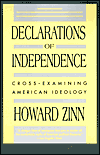
Religion and politics both act as a "tool" of the elite. The
constitution itself becomes meaningless to them when it interferes with their
economic objectives. Cloaked under the rhetoric of "national security", it is
painlessly cast aside. Fear mongering among the masses and the "illusions of
fear" spread by their media; act as a catalyst in such efforts to "hijack" the
constitution itself.
Vilfredo Pareto outlined "elite theory" (centuries after the
Koran), inspired by whom, sociologist C. Wright Mills, did his pioneering work,
The Power Elite (1956). Mills states:
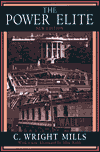
By strategically displacing jobs and people and concentrating
poverty in the inner cities, the elite nourish a "street code", a code that
forces people on a social level to adopt it, if they are to survive. Elijah
Anderson in his book, Code of the Street (1999), states:
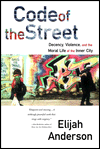
Alexander (1996)
notes:
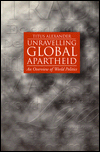
"The most important decisions in the world are made by
relatively few people -the top echelons of a dozen ruling parties, a few hundred
massive corporations and finance companies. They in turn are served-and
influenced-by senior civil servants, policy analysts, editors and a few thousand
lobbyists, pressure groups and think tanks"less than 0.03% of the people in the
West. Each country has a different power structure"but their elites have more in
common with each other than with their fellow citizens (1996:209)."
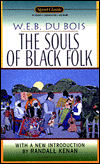
"The red stain of bastardy, which two
centuries of systematic legal defilement of Negro women had stamped upon his
race, meant not only the loss of ancient African chastity, but also the
hereditary weight of a mass of corruption from white adulterers, threatening
almost the obliteration of the Negro home (W.E.B Dubois 1903: 50)."
Apart from the fact that Herrnstein and Murray don"t have much knowledge
of biology, their ideologically manipulated data, comparing IQ to socioeconomic
status, has been widely criticized. The cultural bias in the IQ test itself is
conveniently ignored (ed Fraser 1994), as are the over-time increasing "group"
IQ scores internationally and even locally among immigrant groups. It is beyond
the scope of this paper to go into details with the "implicit" racism of Murray
and Herrnstein, however it is worth mentioning that if such be the acts of
"intelligent" beings, like the whole sale genocide of communities, the "less
intelligent" animal kingdom shows a lot more prudence in its existence.
Controlling for factors like "human interference", the animal kingdom might even
outlive "intelligent" humanity.
By literally "squeezing" the life out of
the earth, and leading it towards a premature death, Capitalism has shown a
tendency of not being able to sacrifice the present for the future. The
conservative right (the torchbearers of Capitalism, the likes of Murray &
Herrnstein) however, blame the "underclass" for a similar trait (not sacrificing
the present for the future). This makes us wonder who the real source of such a
"culture of poverty" is. A source similar to the "code of the street" and the
"culture of terror".The imperial elite, those that want to teach the
"barbarians" responsibility and decency have acted in the most irresponsible and
immoral way imaginable, even after using the Atomic Bomb (being the only ones to
do so in human history) and seeing its effects:
Analysis of the poor in the United States,
reveals the dynamic nature of the group. People keep entering and exiting from
the ranks of the poor. The one thing that remains consistent is that the
majority of the "persistently poor" in the US are the African Americans.
Sociologist Herbert Gans, theorized that poverty is deliberately perpetuated in
society among certain segments because the poverty of those segments benefits
the elite (Gans 1995:91-102). Here on a local and global scale is empirical
evidence for Gans" theory:
The American
Ghetto: In the late 1940s and 1950s due to economic
prosperity, men and women started marrying early and home construction in the
suburbs reached an all time high. Middle class white Americans deserted the
inner cities in great numbers, as a result by 1970 suburban residents were a
majority in metropolitan USA, while before they had been one third of all
metropolitan residents. American cities were being rapidly transformed, but one
feature of them remained the same and that was the black ghetto. White
suburbanization and black in-migration to the north led to an increase in the
size of the ghetto. Neighborhood racial turnover was carried out in an almost
automatic manner based on what sociologists referred to as the "threshold of
white tolerance".
A few black families would enter the neighborhood and
white residents would start abandoning and selling their homes and moving out.
Realtors played a major role in lowering this threshold and made big money in
the process. This was achieved by what is called "block busting." Agents would
go door to door warning white residents of the "invasion" by black folk. They
would purchase the home for a low price, divide it up into smaller units and
sell at a premium to black settlers.
As a result of this, spatial
isolation segregation indices in the northern cities peaked in the 1950s. In the
1970s the average segregation index for African Americans was 70. This means
that 70 percent of blacks would have to move out of a neighborhood in order to
achieve an even white black population configuration. In most big cities the
number was close to 90 percent. The highest segregation index ever recorded for
immigrant groups in the US was 56 for Milwaukee Italians in 1910, by 1970 the
lowest index of segregation for African Americans was 56 in San Francisco
(Massey & Denton 1996).
The US federal government was directly
involved in the segregation process. To increase employment in the construction
industry and increase home ownership, the Home Owners Loan Corporation (HOLC)
was started. The HOLC initiated the process of redlining. Those who resided in
the redlined areas almost never got loans and could never move out. How the
World Bank and the IMF divides up countries of the world into zones and ratings
is alarmingly similar to HOLC practices.
By giving a twenty five to
thirty five year loan with a 90% guaranteed collateral payment, the FHA (Federal
Housing Administration) and VA (Veteran's Administration), during the 1950s and
1960s, encouraged selective out-migration of middle class whites to the suburbs,
leading to a decline in the economic base of the city and the expansion of the
ghetto. In giving out loans, the FHA determined minimum eligibility requirements
for lot size, which effectively eliminated inner city homes, thus forcing those
who had got the loan to move out.
Black migration to U.S northern cities
during the early 1900s related inversely with the ebb and flow of European
migration. When the economy in Europe was booming, European immigrants would
move back home creating a shortage of labor in the North. This would boost black
migration to the North. In bad times, the inverse would happen. Blacks were also
not allowed membership in white unions and as such were used as "strike
breakers" by employers. As the numbers of black migrants increased in northern
cities, institutionalized methods were adopted to check the expansion of black
settlements. These methods, like red lining, zoning, legalized violence, private
contracts etc, made sure that African American populations got concentrated in
"ghettos" that were homogeneous, and completely isolated from the main economy
(Massey & Denton 1996:31-35).
1. Colonial powers established
trading systems in the colonies to extract much needed resources for the West.
These trading systems were controlled by the colonial powers in the case of the
"Third World". Higher-level employment was not offered to locals and so there
was little transfer of skill (Fieldhouse 1999). This led to "skill mismatch";
similar to what William Julius Wilson discusses as one of the reasons for the
development of the "underclass."(Wilson 1996)
2. The primary
commodities, and raw materials towards which the "Third-World" economy was
forcibly geared were very vulnerable to price fluctuations. This led to the
development of a "cyclical" pattern of poverty, similar to the "ebb and flow"
leading to black employment in the northern United States, discussed above. The
West even today, allows migrant workers when there is a demand at home and
expels them when the economy goes down (Alexander 1996).
4. Marketing boards controlled
by the colonial powers were set up in these countries and they purchased local
produce at prices well below the market, added their markups and sold them to
the colonial "core" power. The huge profits they earned were sent to their homes
in these "core" countries and not invested in the "Third World" (Fieldhouse
1999). This is very similar to the lack of investment in inner-city
infrastructure and employment base building. In most cases, the investment goes
to boost tourism and to develop the downtown area, with no money being spent on
providing much needed housing and jobs.
5. Currencies of the "Third
World" were devalued by force, thus increasing land depletion (desertification)
to meet the increased quantity demanded by the "artificially" lowered price. The
extra income and profits were either spent on giving big salaries to the
European "managers" of these colonies, or the European owned transportation
networks, or the European owned marketing boards. Eventually, all this capital
was drained from the "Third World" as these Europeans sent the money back home.
Environmental depletion is not only perpetuated in the "Third World" by
the West, minorities face similar environments within the rich industrial
countries as well. The US General Accounting Office study of hazardous waste
landfill siting found a strong relationship between the siting of offsite
hazardous-waste landfills and race and socioeconomic status of the communities
in which they were located (Bullard 2000:32)
6. Just like the ghetto, the
"Third World" economy was completely detached from the one section of its
developed economy that serviced exports to the European colonial powers.
The "Third World" led to the development of the West
via (Alexander 1996):
1. Under priced raw
materials, and the vast capital flows from the "Third World" sustained Europe
during the 19th century and led directly to its modern industrial
development.
2. Mineral wealth and Gold extracted from the "Third World"
laid the foundation of the capital markets in the West.
3. Over 20
million unpaid Africans forcibly enslaved, added to the surplus that drove the
industrial engine.
4. Millions of indentured servants provided labor at
wages well below subsistence.
5. Markets, like today, were specifically
geared to serve optimally the markets of the "core" colonial powers. The surplus
was invested in the "core" country and not in the "Third World."
6.
Destroying local industry, forcing specialization in products, the prices of
which could be easily manipulated to serve the Western market, strengthened
markets fed by "Third World" capital. There was thus complete monopsony (one
buyer who can set the price at which he buys) in the purchase from the "Third
World" of its resources and complete monopoly (one seller who can set the price
at which he sells) in the sale of colonial products to the "Third World".
(FieldHouse 1999 & Alexander 1996)
Consider the example of Nigeria.
Nigeria produces one of the highest-grade oils in the world. This oil, bonnie
light crude oil has great demand in the aviation and space programs in the
developed world. However, the country including the people that live around the
oil fields are plagued with unemployment, poverty and lack of health care
(Chinyelu 1999).
TO
CONTRIBUTE TO THIS EFFORT
PLEASE PASS THE WEB SITE URL TO AS MANY AS YOU
CAN
THANK YOU
Please
continue down for more information
An analysis of census data in the United States (US Bureau
of Census) shows that the structure of the African American population
(demographic profile) in the United States resembles populations of the
"Third-World" more closely than the general population of the society in which
they reside, comparatively. The African American population is younger than the
white population having a median age of 30 years compared to 38.1 for whites.
Similarly "Third World" populations are consistently younger than the developed
world because of higher fertility and mortality. Only 8% of African Americans
are over 65 compared to 14% of whites. Life expectancy for black males is 67,
while that of white males is 74. Similarly life expectancy in the developed
world is consistently higher (in some cases by over 30 years) than in the "Third
World".
Infant mortality for white Americans is 6.0 per 1000 live births
while that for blacks is 14.3 per 1000. The Median family income for white
Americans is $46737 while that for black Americans is $29404. The median
personal incomes are $14892 for black males (15 and over), and $24122 for white
males (15 and over).
In the 1940s, blacks made up less than 10% of US
population, yet 60% of prisoners executed were black. Unemployment rate for
blacks (16 and above) is 11.3% while national unemployment rates have been
around 3% nationally in the past few years. Of all people 25 to 34 years of age
14.6% of blacks compared to 29% of whites had a bachelor degree.
Private
schools in the United States are almost entirely white. Fifty percent of all
private schools had black enrollment of less than 9%, even though almost half of
the private school students came from central cities, where minorities aren"t
even minorities (Ed. Wright. 2001).
Murder victims are
disproportionately black males. Fifty black males per 100,000 population were
murdered in 1995 compared to 7 white males. Black males make less money than
white males in similar occupational positions, which require similar levels of
skill. The median income of white males with a bachelor"s degree is $43,335,
that of a black male with a similar degree $33,217. 15% of black males in the
black labor force are managers compared to 30% of whites in the white labor
force. However, 32% of blacks are laborers compared to only 18% of whites.
Environmental racism is witnessed clearly in the southern United States.
Out of the 27 landfills operating in 48 states, a third are located in five
southern states. The total capacity of these represents 60% of the nation"s
total landfill capacity. Blacks make up 20% of the south"s population, yet zip
codes of minority areas represent over 63% of the total landfill capacity of the
south (Bullard 2000:33).
Economic exploitation and detachment from the
mainstream society, leads to a profile of African Americans that closely
resembles the profile of "Third World" countries. Distribution of diseases also
reveals the colonial status of African Americans in the US. African Americans
and Hispanics make up around 15% of the US population yet they make up 49% and
20% of all AIDS cases reported among those 13 to 19
(www.icare.to/caucus/health). Black women are three times more likely to die
while pregnant and four times more likely to die at childbirth than white women
are. The mortality stratum for all Africans (Child/adult) is either high or very
high while that for all Europeans is low to very low. Only the Russian republics
and some countries in the former Eastern European Soviet block have high adult
mortality.
The American Indian death rate from diabetes is 380% higher
than that for the White population (27.8 per 100, 000 compared to 7.3 for
Whites). Whites are three times more likely to undergo bypass surgery than
non-Whites, improving their probability of survival. Similarly poor urban Black
and Hispanic neighborhoods have an average of 24 physicians per 100, 000 people
compared to 69 per 100,000 in poor White communities.
The introduction of
disease by white settlers that devastated the indigenous population is well
documented in history. From the 1770s, venereal disease was introduced among the
Maori in New Zealand. In the 1790s influenza and TB entered the population. This
devastated the indigenous community, which had no resistance against such
"foreign" diseases. Beginning in 1769 when Captain James Cook entered New
Zealand, the Maori outnumbered the settlers 40 to 1. By the 1870s the
demographic picture of the Maori changed. The settlers outnumbered them 6 to 1.
In the 1880s only 30% of Maori girls reached their 30th birthday (Ed.Stasiulis
1995:42).
Stasius and Japphan write about disease and the American
Indians:
More devastating to the American Indians than
changes wrought by trade were the scourges of disease against which Native
peoples had little or no immunity (small pox, influenza, bubonic plague, yellow
fever and so on), and the intrusion of Christian missionaries. It is now
estimated that 20 waves of pestilence killed as much as 90% of the original
population..(Ed Stasiulis 1995:102)
Consider the case of Canada.
According to some estimates, the unemployment rates for the Native American
population in Canada has never gone below 80%, and most of those working are
working at projects funded by the government (Powless 1985). In 1970, 24% of
Indian males made more than $6000 per year compared to 52% of Canadian males.
The earnings of the average Canadian are 29% higher than those of the Native
Indian man.
The proportion of Canadian men in professional and technical
positions is nearly twice as high as those in the Indian labor force (18%
compared to 8.6%). The average Canadian man earns 35% more than the average
native man in the same occupation with the same skill level. In 1969, 80% of the
Indian families were below the poverty line. The death rate for Indian people is
six times that national average and the infant mortality rates are more than
twice the national average.
The life expectancy at one year of age is
63.4 years for Indians and 72.8 for the general population. Suicide among
Indians is six times the national average and violent deaths are four to five
times the national average. In 1974, 54% of the Indian population was using
social assistance compared to 6% of the non-Indian population. The juvenile
delinquency rate for natives is three times that of the national average. In
1979 Native people represented 1.3 percent of the Canadian population yet they
were 9.3% of the penitentiary population.
Australia is another example.
Just as the patterned appearance of the ghetto in the inner cities of the United
States, the appearance of affluence in close proximity to poverty is found in
this 'white' settler state. The life expectancy of indigenous people in
Australia is 20 years less than that of the non-indigenous population. Similarly
indigenous people account for 31% of all Australians who live in abandoned
dwellings or are "homeless" by all real measures. The unemployment rate for the
indigenous population is twice that for the non-indigenous white population.
Compare the above data to an almost similar pattern of disparity (table
1) found among the white "settler" states and the former colonized non-white
world. Global poverty is the rule and not the exception. Wages in third-world
countries are 80 to 90 percent lower than in the West. Fifteen percent of the
world's population (the rich countries of the West) controls over 80 percent of
total world income (Chossudovsky 1997:35). Given that roughly 30 percent of the
population in those countries controls over 50 percent of their resources, an
even smaller group controls the world (Blau 1999:5). Over 85 percent of the
world population gets less than 20 percent of total world income. The poorest
20% of the world"s population get around 1% of world income (Macionis
1996:189).
The numbers however, are only partially telling. They
understate and mask true picture of global poverty, as their provision is based
on a relative assessment of poverty. For example, according to the World Bank,
the "upper-poverty" line is defined as a per capita income of $1 a day. Those
that earn more than $1 a day are defined as non-poor by such a definition. Thus
poverty is grossly understated. Compare this to the U.S with a per-capita income
of over $20000 a year; one in five is defined as poor (Chossudovsky
1997:43).
According to Marxian analysis of stratification, economic
oppression of minorities in capitalism is necessary. Racism thus becomes a
screen, which the capitalist elite uses in order to pit groups of people against
each other. If people can be distinguished easily and social consciousness can
be molded by use of religion etc, to convince a group of people that 'others'
are inferior to them, the emphasis of conflict shifts from its source, the
capitalists, to the masses.
Bureau of Census 1995 & Population Reference Bureau, 2001 Washington, DC
Oppression of the minorities serves a dual
purpose, being profitable in addition to being a screen. Minorities can be hired
for low wages to do the work no one else wants to do. This not only reinforces
the stereotype that they are 'inferior' and easily exploited, it provides so
called 'empirical' evidence in favor of the 'ideology of superiority' based upon
the theoretical construct of Social Darwinism. The real cause, the institutional
arrangement of the elite, is thus masked. It is not only the interpretation of
religion but also the interpretation of "science", pseudo-science, that becomes
the 'opium of the masses'. As a result stereotypes emerge that are perpetuated
by incomplete information and casual/subjective empirical observation that
ignores the context of the situation. Stereotypes thus become a cost-effective
"weapon of oppression", employed by the elite for maximum profitability and
resource allocation.
Evaluating a list of eight Black stereotypes
including "prefer to accept welfare" and have "less native intelligence", 75% of
the Whites agreed with one or more and over 50% agreed with two or more, in a
recent national survey of the Anti-Defamation League. About 30% or more agreed
with four or more. In a 1994 National Opinion Research Center (NORC) survey
about the work orientation of Blacks, only 16% listed Blacks as hardworking.
Whereas only 7% placed Whites on the "lazy" end of the spectrum, a little under
50% placed Blacks in that category (Feagan-White Racism).
Racialized
emotions are an effective way to ensure de facto, that old laws of separation
are respected even when they have been made illegal on the books. In a 1990,
two-thirds of the Whites said that they would have a negative reaction if a
close relative married a Black person. Only 5% said that they would have a
positive reaction.

II. The extremists are already in power. They have
turned much of the world into a military garrison and an economic
purgatory"(Parenti 1989:6) In
1955 the General Agreement on Tariffs and Trade (GATT) was ratified leading
eventually to the development of the World Trade Organization (WTO) in 1995. The
benefits of these organizations for the most part have accrued to international
banks and transnational corporations. They imply a "supervision" of 'Third
World' countries. The conditionalities of the WTO have given a new "legal"
setting to the relationship between the West and the "Third World".  IMF, WORLD BANK AND THE GLOBALIZATION OF
POVERTY
IMF, WORLD BANK AND THE GLOBALIZATION OF
POVERTY
The
elite in the 'Third World' countries that accept funds from the agencies
mentioned above agree to "sell" their sovereignty, by accepting conditions for
economic restructuring and policing to ensure compliance by the West
(Chossudovsky 1997:35). Debtor nations have to give up their control of fiscal
and monetary policy and Western institutions dictate their financial budgets and
the working of their Central Bank. Thus every debtor country has a nominal
government having even less power than subject local governments of the colonial
era.
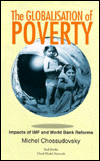
Freedom National collected $50 million in
deposits from their two Brooklyn branches, yet woefully made only three mortgage
loans, totaling a mere $130,000 to Brooklynites seeking to purchase homes"In
other instances, members of the bank's management board pushed through unsecured
loans, either for themselves or for their friends, some of which were not repaid
(Chinyelu 1999:84-85) The
loans that were given by the bank and the IMF came with strict conditions. They
were "policy-based". In the beginning of the 1970s, the Peterson Report in the
United States recommended to " establish a framework of
principles, procedures and institutions, that will ensure the effective use of
assistance funds and the achievement of US national interests (McNeill
1981:52" (12)). The 'weighted' vote of the United States
and the West in decisions is comfortably placed in such institutions, to
guarantee decisions in their favor. From 1970 to 1980, the flow of investment capital
from the United States to the Third World amounted to about $8 billion. But the
return flow from the Third World to the United States in the form of dividends,
interest, branch profits, management fees, and royalties was $63.7 billion.
Together (1989 figures), all multinational corporations and banks in the world
take as much as $200 billion every year from the Third World Nation. (Parenti
1989: 13; Monthly Review 1983:37; Political Affairs, July 1982:37- all quoted by
Parenti) Consumers know that credit-card companies are happy if you make the
minimum payments on your credit cards thereby maximizing the profits of their
company via interest and "late-fees". Now imagine if they had the liberty to
"force" you to use the convenience checks that they mail you, and also dictate
where you do the spending- this is a close approximation to how the World Bank
and IMF operate with 'Third World' countries. If your debt becomes unmanageable,
you have to work to pay off the debt, whether you like your current job or not,
otherwise you risk falling through the security net. By 1983,the money collected by foreign banks in
the form of interest payments on Third World debts was three times higher than
their profits on direct Third-World investments (Parenti 1989:27) After adopting the 1991 IMF plan, the price of rice in India rose 50
percent in six months and the real-earnings of the textile industries fell by 60
percent due to inflation. This directly affected the lives of over 60 million
people. Adding to the misery were the reduced wages of rice-paddy workers,
around $0.57 for a day"s work. This amount, 0.57 cents, contrary to popular
opinion is not a fortune in India. Adjusted for cost of living (purchasing
power) differences, it could buy only $2 worth of goods in America. A monthly
salary of less than $50, if they were in the US (Alexander 1996:109). Can anyone
survive on $2 a day in the United States" However, the Indian government didn"t
care because most of these "low-wage" workers were of the "untouchable" class.
At best they needed "controlling" and "austerity" similar to the view of the
West towards the 'Third World'.
"Democratic" Loans: One of the first big loans that the World Bank made was on August 7,
1947. It was given for reconstruction to the colonialist government of the
Netherlands. The Dutch had just sent 145000 troops to crush the anti-colonialist
uprising in the East Indies. In 1966 the Bank in defiance of the United Nations
continued to lend money to Portugal [and its colonial domination of Angola and
Mozambique) and South Africa (and its apartheid). At this time in history the
Bank was not profitable and had few lenders in outside regimes fighting wars.
This however was to change in the late 1960 and early 1970s.
Loaning Out Poverty: The boom in the oil prices in
1973 and the US recession forced the loaning of money to the "Third World" at
close to zero (sometimes negative) interest rates. This money was used to
purchase U.S and Western imports, resulting in economic growth in the West and
the creation of over 2 million jobs (Alexander 1996:114). Just like a modern day
credit-card company that makes borrowing attractive by a short period of low
interest lending, at the end of which the rate jumps to unreasonable levels, the
U.S suddenly increased interest rates in 1979.
The total outstanding
debt of developing countries was $62 billion in 1970; increased to $481 billion
in 1980 and in 1996 stood at over $2 trillion (Chossudovsky 1997:46). By the
middle of the 1980s, the poor countries of the world were giving more in debt
servicing to the rich West than was being received in the form of all inputs
(loans, foreign investments and aid).
Banks and institutions that set up
shop in poor minority communities in the United States similarly drain the
community of their resources. The same system is at play with its predictable
pattern of winners and losers. Chinyelu presents a case study of the Freedom
National Bank that was established in 1964 in Brooklyn to serve as a community
institution for providing loans to African Americans for home purchase and small
business establishment:
The IMF and the
World Bank have devised a way to be even more profitable than the credit card
companies. They don"t require the poor countries to pay back the principal (at
the moment) as they realize that most of them cannot, even if they wanted to, so
they just require the periodic payment of the interest on the loans. This is
called "debt-servicing" by "rescheduling" debt payments.
However, apart
from being extremely profitable, resulting in a net flow of capital from the
'Third World' to the West (poor people feeding the rich) it gives the rich
industrial countries of the West complete control over the national economic
policies of these countries. There are tight conditionality to these loans, and
deadlines to their implementation in the debtor"s economy. The changes that
these institutions require are not based on the implementation of an investment
program or project; they are "policy" changes that affect the entire economy and
especially the majority population in these countries, those that are the most
deprived. The names and terms of the loans explicitly suggest the objectives.
They are called "structural adjustment loans (SAL)," or "Sector
adjustment loans." The IMF calls part of its loaning
facilities "Systematic Transformation Facility
(STF)".
On paper, the loans are contingent upon
Macro-economic stabilization and structural reforms. By Macro stabilization, the
IMF-World Bank requires a country to devalue its currency, liberalize its prices
and snip and cut the country"s budget, called austerity measures. This is
required of countries whose GNP is less than General Motors or the Ford Motor
Company. Fifteen percent of the world"s population living in the Western
industrial countries is responsible for nearly 80 percent of world expenditure
(UN World Report 1998). Yet the same people, who spend the most, want to promote
"austerity" in the "Third World". These "Ghetto Lords" enforce the
following
i) Currency devaluation: This is almost universal in the IMF-World Bank policy agenda. A
devalued currency almost overnight sends the 'Third World' economy in question
into a price hike. Imports become more expensive while exports of the country
become cheaper to the West, through the reduction of the dollar price of labor
cost. The extra dollars that the government earns or saves are supposed to be
used for debt servicing i.e. recycled back to the West. The effect of
devaluation is that the domestic price of food and medicine and public services-
common necessities- goes up almost overnight. Thus the poor are made poorer.
Those who have saved all their lives lose the real value of their money in a
matter of hours. However, commodities and raw materials required by the rich
countries of the West become cheap to them but expensive for 'Third World' home
consumption and lead to a booming economy in the West with a 2.2 percent
inflation rate, compared to the double digit inflation in the "Third World".
After the flood in Bangladesh in 1991,
which killed over 140,000 people, the IMF enforced its devaluation program. The
retail price of rice went up by over 50 percent causing a famine and killing
tens of thousands of people on paper. The real number was much higher, as the
emergency food, being appropriated by indigenous officials never reached the
starving masses (UN World Report 1998).
ii)
Anti-inflationary program: However, after causing
inflation via devaluation, the IMF wants the government to enact an
"anti-inflationary program".
The IMF method of attacking inflation is to
cut demand and put a tight control on the money supply. However, devaluation,
which was the real cause of inflation, is ignored. Contraction of demand implies
that public expenditure is to be controlled. The only way government expenditure
can be controlled is to lay off public employees or to cut social service
programs.
This has a double effect. It cuts government spending as well
as private consumption spending. If people don"t have jobs they spend less on
consumption. Therefore, money is freed to service the debt while people live at
near starvation levels. Global consumption expenditure has grown at an average
of 3 percent since 1970, however in the poorest of the 'Third World' countries
it has fallen dramatically. Both public and private consumption per capita in
Africa has fallen over 20% since 1980.
Another way expenditure can be
controlled is to cut investment and infrastructure building. Thus projects like
public utilities and water are stopped midway. Thus bubonic plague in India in
1994 was directly attributed to the "IMF structural reform program of 1991"
which cut spending in that sector. Out of 4.4 billion people in developing
countries, 60 percent lack access to sanitation and nearly forty percent have no
access to clean water and a quarter have no housing (UN World Report 1998).
About 17 million die of curable infectious/parasitic diseases like Malaria and
Diarrhea etc. Yet the "noble" dream of the World Bank according to their web
site is "a world free of poverty."
There is yet another way that demand can be reduced and that is to
reduce foreign imports. However, the IMF-World Bank agenda strictly forbids any
control on trade. Not only this, imports from the West are forcibly encouraged
by "quick disbursing policy-based loans (Chossudovsky 1997:53)" for importing
consumer goods and food from rich countries. Not only is the debt enlarged, it
earns extra profit for the West as more of the devalued currency has to be used
to pay for the "same" amount of imports.
The devaluation discussed above
causes a short-term boost to the 'Third World' economy by increasing exports.
The West"s control of the governing bodies of "Third World" nations ensures that
the profit from this, what is left after debt servicing, goes to overseas bank
accounts, in the West [by making the free movement of foreign exchange one of
the conditionalities of loan provision in many countries]. The short-term boost
however is over soon. Devaluation by the other 'Third World' countries, all
fighting for crumbs from the "master"s table" soon restore the balance of trade
to the former level, leaving the country poorer and the misery greatly
magnified. This sets a viscous cycle of misery with riots, government
overthrows, and near-war situations in many of these countries.
iii) Separation of Central Bank from politics: One of the conditions of the IMF is that the debtor nation separates
the Central Bank from all political power. Thus the IMF and not the government
of the country control the money supply and money creation. Therefore the
economic development or non-development is now directly in the hands of the
"foreign" power, the IMF and the World Bank, with its decision vote in the hands
of the United States and its Western European allies. The influence is such that
the heads of many of the Central Banks are former senior officials of the
International Financial Institutions (IFI), and sometimes receive salary
supplements from these creditors (Chossudovsky 1997:58).
iv) Public Expenditure Review: The
IMF-World Bank monitors all public expenditure by the government through its
"Public Expenditure Review (PER)". It has required that certain "vulnerable"
groups be targeted but overall the state reduces its expenditure on such things
like health and education. ). During the 1980s, spending on education in African
IMF countries fell by 25% according to the UN Commission on Africa (Alexander
1996:127).
The reduction of expenses on social services, which were small
to begin with, is not a one-time demand by the IMF and the World Bank. They
require a "moving target" approach. Once the target is reached, a further
reduced target is set for the next period, causing a further cutback in public
spending. At the same time, spending on the military industry, especially where
the sellers are the western firms is never discouraged. The major part of the
expenses of many of these nations is on arms import. In NATO countries, military
spending fell by 33 percent between 1987 and 1996, however in South Asia, it
increased by 13 percent and in some countries like Indonesia and Malaysia, by
over 35 percent (UN Human Development Report 1998).
These arms were
imported in the major part from the West. It is therefore expedient for the West
to keep situations in these countries at a 'near war' level. The 'conflicts',
that are kept alive in many of these countries have already been decided upon by
the United Nations [Kashmir and Palestine is the case in point] but are
deliberately ignored by Western powers that seek to benefit from the status quo.
In keeping with this contradictory policy, certain other United Nations"
resolutions are forcibly extracted and executed with lightening speed in the
"Desert Storm" fashion.
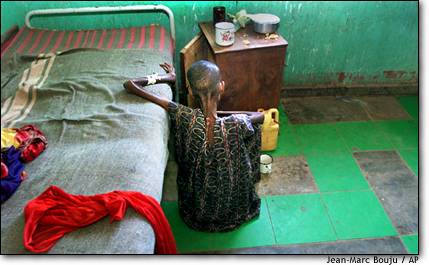
In the 1970s Somalia was almost self-sufficient in
food and Vietnam had a 90% literacy rate. After they allowed the West to
implement "Structural Adjustment" in their economies, we saw that Somalia was
starving and enrollment in Vietnamese schools dropped by over 25% in a short
period (Chossudovsky 1997). "Earlier in 1990, when Freedom National was having problems, a much
larger bank in Boston, The Bank of New England, was in a similar situation.
However, the federal government made an effort to sustain the Bank of New
England by depositing public funds in the Bank, while a the same time sharply
cutting back similar deposits at the Freedom National Bank, thus hastening the
collapse of this small minority owned institution. Equally disturbing was the
Federal Deposit Insurance Corporation willingness to cover the Bank of New
England"s $3 Billion in uninsured deposits, while not willing at least initially
to cover Freedom National"s $8 to $10 million in uninsured deposits (Chinyelu
1999:85)." vi)
Removal of Import Quotas: The policies that encourage
Western imports at the detriment of the developing domestic industry is further
strengthened by the insistence of the IMF-World Bank that import quotas and
tariffs be reduced if not eliminated. This has two effects; i) It leads to an
increase in luxury goods being imported into the domestic economy, thereby
resulting in a further outflow of capital to the West from poor countries and
ii) a reduction of custom duties to the domestic government which could have
been spent on education, health and other public services. Most of all however,
this "increase" in spending is not due to a good economy but is sustained on
either "short-term" export gains by devaluation [discussed above] or on
"adjustment loans" i.e. further debt [also discussed above]. "Although there have been a number of studies on the subject over
the past decade"In fact it has often been found that the programs are associated
with a rise in inflation and a fall in the growth rate (IMF Staff Papers
37:2:1990, p196, p222- as quoted by Chossudovsky 1997:69)." Conclusion & Solutions: We
live in a world where imperialism consigns hundreds of millions of people to
lives of misery and oppression and where the shadow of nuclear death is cast
upon us all, a world where the pursuit of profit is destroying the ecological
conditions of life itself"The people of this country and other nations are
increasingly become aware of this. The people know that nuclear weapons bring no
security to anyone and that interventions on the side of privileged autocracies
and reactionary governments bring no justice. They also seem to know that they
pay most of the costs of the arms buildup and imperialism"(Parenti 1989:
203) As we
saw above, legislation based solutions are extremely limited in the results they
can get given institutionalized racism, which I have argued is the cause for the
continuing exploitation of the "Third World" by the West. As its base, the white settler society construct
refers to the intention of colonial administrators"an "overseas extension" or
replica of British society. Hence the dominant culture, values and institutions
of the society mimic those of the "mother" country...(Ed. Staliusis et al
1995:97). "The war with Europe was both political and
social, the war in the Pacific was racial." (as quoted by Dower, John W
1999:286).
The emergence of an underclass isolated in urban
ghettos with high rates of joblessness can be traced to the interaction of race
and prejudice, discrimination and the effects of the global economy. These
factors have contributed to the profound social isolation and impoverishment of
broad segments of the inner-city black population"In their social isolation an
oppositional culture, a subset of which is the code of the street, has been
allowed to emerge, grow and develop"A larger segment of people are now not
simply isolated but even more profoundly alienated from the wider society and
its institutions." (Anderson 1999:316) 1.
New ideology:
v) Investment in
infrastructure: In controlling expenditure, "ceilings" are
placed on all expenditures of investments. The state cannot choose or employ its
own public to build infrastructure. Though the "Public Investment Projects
(PIP), the IMF-World Bank become brokers of all investment projects in the
"Third World" country. It is required that "competitive bidding" among select
international firms are the criteria. International firms are employed which
charge large amounts of money in management and consultation fees [intellectual
property rights].
A huge proportion of the debt is used for such
"technical assistance." Thus once again, no capital is sent and a few numbers
are added to the computer totals. The money changes hands in the same block of
rich Western countries who compete for contracts to build. Locals are kept out
of the planning process but local laborers do most of the building at marginal
wages. Thus the external debt is enlarged, and local resources are not used for
developing technical expertise but for basic "raw" labor, as against "planning
science".
Another way the IMF-World Bank stunts domestic growth in the
poor nation is by controlling the price of fuel and utilities. The price often
inflated several hundred percent, force many manufacturers into bankruptcy by
fictitiously increasing the cost of manufacture and internal transportation.
Thus imports from the West appear as the only alternative. The East India
Company achieved a similar motive in colonial times when it imposed
"internal-transit duties" on local manufactured goods, thus aborting a newly
forming industry. The same is happening today in Sub-Saharan Africa where local
farmers cannot transport their produce to urban areas for sale (Chossudovsky
1997:63).
Yet another way employed by the IMF-WB to reduce investment [in
the domestic economy to keep it at a resource providing, non-manufacturing
level] is the deregulation of domestic banking and the free entry of foreign
banks in the market. The government is not allowed to give subsidized loans, and
a strict control of money creation together with other economic requirements of
the IMF-WB, drives up interest rates to unreal levels. It becomes impossible to
borrow money to invest in industry as its 'opportunity cost' is too high. It
would thus be more profitable to keep that money in interest-earning accounts.
This encourages non-investment and an inflow of "black money (money that has
escaped taxation)" and "dirty money (illegal trade)" into the 'Third World'
money market.
The advantage of this is temporary for the domestic
economy, which gets short-term relief in debt servicing. After a short gain
there is a huge loss, as the elites in these countries, after laundering this
money, send it to the West, whereas before it couldn"t be sent as it was out of
the system. Therefore, there is a double-exit of capital from the poor country.
The exit that occurred when the funds were used for debt servicing and the exit
that followed shortly thereafter in the form of laundered money sent to Western
banks.
The IMF-WB policy encourages money laundering on a global level,
where it suits the interest of the West. Where such laundering doesn"t suit them
(or is channeled back to the domestic economy), worldwide bank chains like the
Bank of Credit and Commerce International (BCCI) are forcibly shut down, and
their funds appropriated.
On a local scale, writing about the Freedom
National Bank in Harlem, Chinyelu (2000) states:
vii) Privatization of Enterprises:
Another policy advocated with a vengeance [by threat of cutting off funding] by
the IMF-World Bank is the privatization of state owned enterprises. In the best
scenario for the West, the most profitable 'Third World' ventures are bought in
exchange for debt servicing by Western firms. In this regard, Citibank has been
doing a lot of shopping overseas. In most cases these transactions are just
"on-the-book". There is no transfer of capital to the poor country. The "debt"
number is reduced by a small amount on a computer "in" the West and ownership of
a key industrial player in the 'Third World' is transferred to Western
ownership. The profits from this venture are now, instead of being invested in
the domestic country, being sent to the West; in the case of Citibank, to the
US. The poor country has gained nothing in the process. Since the mid 1960s
history has shown that the debt number that went down slightly in that computer
"in" the West has gone up more than 3200 percent, as poor countries got buried
in "forced" debt.
Another privatization venture enforced by the IMF is
the privatization of land by issuing land titles to farmers. The income so
generated would help the debtor country pay off the interest on the loans taken
from IFI"s through the IMF-WB. However, this displaces traditional farmers, many
of whom find themselves without land to grow food, almost overnight.
viii) Domestic Tax reforms: These
have been the agenda of the IMF-World Bank as well. They have insisted that a
domestic sales tax be applied on "common necessities". The burden of this tax
invariably falls on the lower and middle class consumers who are already under
the burden of reduced real wages and inflation [caused by IMF devaluation]. The
contradictory nature of this policy is revealed when these agencies insist that
"tax breaks and tax holidays" be given to foreign investors. Those investors who
will cause a slight reduction in a computer number and will send most of the
domestic growth abroad.
Not only has empirical evidence shown the
disasters caused by the IMF-World Bank on an almost universal scale, especially
in Africa and Asia, the IMF and World Bank have acknowledged their failures
[without a change in policy, however]:
The clearest
historical/empirical proof of this is the discriminatory treatment of non-white
colonies compared to the white "settler-states" like Australia, New Zealand,
South Africa and Canada. In these countries, the White minority was allowed
complete control over domestic resources and was free to invest the surplus in
the local economy and protect their local industry from being devastated by
forced-exchange.
The British invested in infrastructure in these
'settler' countries and money was loaned at rates that followed local banking
rates, and thus were not unusually inflated or exploitive. Wholesale killing of
the non-white indigenous populations by the white settlers also restored a
favorable population-resource ratio in most of these countries. Since there was
no forced production in these "settler-states" and they were allowed
protectionism (Fieldhouse 1999:19) and the freedom to choose their own economic
policy, the products they chose to specialize in were products similar to those
in the West and thus were more profitable and less susceptible to price
fluctuations (Fieldhouse 1999: 130-162). The fact is that Britain treated these
"settler states" as an extension of Britain and not "alien" like its Asian and
African colonies:
We similarly saw that after the "emancipation" of African
Americans after the Civil War in the United States, the ideology that justified
racism to the Western mind, persisted and resulted in a condition for the group
that was little different than the "informal" colonization of the "emancipated"
colonies after "independence". The dropping of the Atomic Bomb on Japan and not
on "white" Germany reveals the same ideology
Bonner F. Fellers, General
MacArthur's military secratary and chief of his psychological warfare
operations, stated before the war with Japan ended:
Fellers described (in an internal memorandum dated June 17, 1945)
the civilian bombings of Japanese cities as, "one of the
most ruthless and barbaric killings of non-combatants in all history." (as
quoted by Dower, John W 1999:286).
The same
ideology, as we saw above, exists today with a change in
terminology.
Recently, Harvard professor and "poverty expert" William
Julius Wilson suggested in, The Bridge over the Racial Divide (2000), that a
broad based coalition be formed that discusses both white and black poverty
matters and is non-race based [to attract the white majority].

On paper it looks like a noble cause but in reality it
doesn"t deal with the source of the problem. It is a dangerous idea as it delays
the addressing of real problems and tactfully serves as a tool of the elite in
maintaining the status quo.
The very assumption that a "non race based"
coalition is needed to motivate action implicitly recognizes that white America
is indifferent to the plight of black America unless their own concerns are
addressed, in such a coalition. The problems of the "Third World" have never
been solved by such seemingly "broad based" coalitions. The United Nations, the
IMF, the World Bank all have "noble aims" on paper and are seemingly "broad
based", yet the problems and the poverty of the Third World has only increased
through most of their history. Small problems were addressed but the "broad"
issues remained unsolved due to an exploitive racist ideology.
Conditions
in the "Third World" that are perpetuated by the global capitalist system result
in an oppositional "terrorism culture". Selective empirical evidence of
injustice perpetuated by the West, to the followers of such an "oppositional"
culture reinforce their own "Robin Hood" standing. Similar conditions in the
inner cities lead to an oppositional "code of the street" and perpetuates street
crime. Similar to the oppositional culture that capitalist alienation and drugs
nurture and tolerate (Anderson 1999: 111). Elijah Anderson in his ethnographic
study, The Code of the Street (1999) states:
If a lasting, just solution to the
continued subjugation and periodic genocide of a majority of humankind is to be
found, we need a new ideology. An ideology that demonstrates, in theory and
action, the "one community" of humankind". Malcolm X witnessed such unity in
Mecca during Hajj, the Muslim pilgrimage.
By emphasizing the common,
non-hierarchical origin of humankind, under one creator God (Koran 4:1), the
Koran constructs a society where illogical ideas of superiority are not only
considered ignorant, they are looked upon as a major source of evil in the
world.
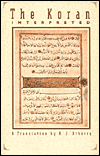
A
common, equity based ideology is critical for generating a "broad based"
collective identity that seeks transformative social justice. It is only under
such an ideology that individual and collective "identity frames" can be brought
into synchrony to reduce the potential for identity disputes (Stoecker 1995).
Without a common justice based ideology, "narrow issue frames" would result in a
movement that at best achieves small goals and either disintegrates or is
co-opted by the elite before any meaningful social change. As a result, without
a change in ideology, all calls for "broad based coalitions" like Wilson"s Bridge Over the Racial Divide (2000) are
bound to fail, like the IMF, UN and World Bank have failed in achieving
"transformative change" in the world.
"O humankind! Be careful of God who created you of a single
essence"(Koran 4:1)"
"O humankind! We have created you male and female
and divided you into nations and tribes for identity. The best of you in God"s
sight is the one most (socially) aware (Koran49: 13)"
"And of God's signs
is the creation of the heavens and the earth, and the differences in your
colors and languages. Indeed in this are signs for those who have knowledge
(Koran 30:22)"
"You (men and women) issue one from the other (Koran
3:195)"
"Let not a nation deride a nation"(Koran 49:11)"
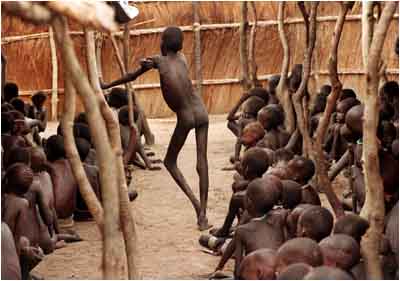
The
history of every human conflict and resulting injustice can be traced to the
"selfish desire" of groups leading to factionalism (Koran 6:65), based upon an
ideology of superiority. Without ideological shifts, even the oppressed workers,
when they get a chance, become oppressors as Michels"Iron Law
of Oligarchy makes clear.
"The Western world"s most learned diplomats have
failed to solve this grave race problem. Her learned legal experts have failed.
Her sociologists have failed. Her civic leaders have failed. Her fraternal
leaders have failed. Since all of these have failed to solve this race problem,
it is time for us to sit down and reason. I am certain that we will be forced to
agree that it takes God Himself to solve this grave racial dilemma (Haley,
1973)." 2.
Access to the media and communication networks: Formal controls alone do not change minds and attitudes. People
discover over time that laws can be violated and avoided. Positive public
relations, especially through the media can have an immense influence on
people"s views. Black communities, which are among the poorest in this country,
have lacked access to the media and effective public relations. Because of
segregation, the majority of White Americans find out about Black Americans as
well as the "Third World" through the media controlled by the elite who want to
perpetuate and rationalize a culture of "superior-subordinate"
relationships. The
value of every individual human life, man or woman, of whatever race, creed or
religion, according to the Koran, is unsurpassed in world
literature:
Capitalism is designed
to keep people apart through competition and individualism. The elite, taking
advantage of the system and the market mechanism generated by Capitalism lock
individuals in a race for survival, pitching one against the other. By reducing
the worth of everything, including human relationships to their "money" value,
Capitalistic ideology and a society projected by such an ideology produces the
worst form of "bondage" possible. "Slavery" to material objects, in which the
purpose of life becomes their acquisition. A "slavery" in which those who are
enslaved don't even realize the depth of their bondage.
Malcolm X said,
and herein lies the solution:
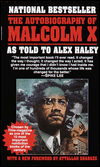

The media is a very powerful and effective tool. It has
been effectively used by Israel to change the image common Americans have about
Jews. By carefully portraying the Holocaust, they have monopolized world
sympathy in their favor. Compare this to the much larger scale genocide of
American Indians and Africans during the slave trade, which nobody hears about.
So powerful is this persuasion via the media that it makes the world ignore the
genocide of Palestinians by the once persecuted Jews.
3. "Odious" Loans:
Most of the loans
given by the IMF-World Bank were "odious" loans. They were given to regimes
supported by the West that were in most cases non-democratic. The people in
these countries were never asked if they wanted the extra debt. Hence, the
default of these loans and the complete writing off of these loans is
justifiable (Danaher 1994). Not only did the regimes to which these loans were
given, removed from office for corruption in some cases, they sent huge amounts
of the same loans back to the West in terms of personal accounts and business
and managerial contracts (McNeill 1981:54).
Thus, the people of the
"Third World" should collectively, following the example of Mexico, refuse to
make any payments on the loans (principal and interest). On the contrary they
should demand the "time adjusted compensation" from the West for the "rape" of
"Third World" resources by the colonial powers and for the free use of labor,
unfair compensation and capital drain from the "Third World" during the colonial
era and after.
4. Investment Banks, Cartels and
Counter Trade Embargoes:
Cartels to control the
price of primary commodities should be set up, so that the West doesn"t gain an
unfair advantage by its economic "warfare" on the "Third World". The example of
the 1970s where, if the "Third World" could collectively impose a defensive
economic embargo against the West, should serve as a benchmark for the
restoration of the balance of power in the world.
Third World poverty
receives lesser attention in the West than a few cent rise in the domestic price
of U.S gas, as was witnessed last summer. Unless the ideology of racism is
replaced by a completely different, more humane ideology, the "Third World"
should pursue "de-linking" from the Western economy, engaging the West only
where it is beneficial to the masses of the "Third World." This implies exiting
all "broad based" coalitions that serve the interests of the
West.
Regional investment banks in the "Third World" that cover certain
blocks of countries should be established. The granting of loans to private
"domestic" entrepreneurs based on the monitoring of their performance in the
local economy should be envisioned.
Import subsidizing industries should
be developed with maximum investment and protection. Trade within the "Third
World" block should be encouraged as against Western imports. When these
"infant" industries grow up, trade can be liberalized on equal, non-predatory
terms with the whole world.
5. Investment in Education
and Information Technology:
The "Third World"
should make maximum investment in developing its media to control the media
warfare by the West [controlled by a few elite-groups with vested interests].
The West's export of the culture of racism, under the false pretense of
"freedom" should be intellectually challenged. Boards that deal specifically
with media issues and the communications of ideas should counteract, and bring
to public notice injustice done in the name of democracy and freedom.
The
West developed in the major part due to information freely shared by Muslim
merchants and the Islamic civilization. Science, Accounting, Mathematics and
Algebra (including the number system), the philosophy of the Greeks, all came to
the West through Islam (Alexander 1996:7 etc). The colonials, by non transfer of
industrial knowledge, and the West nowadays by non transfer of "equal"
technology, plays a game of "technology warfare" backed by a philosophy that,
" an educated Negro (or "Third World") is a dangerous Negro
(or "Third World) (W.E.B Dubois 1903: 71). "Skill
mismatch" is the outcome of planned alienation, backed by
a racist ideology.
Knowledge is nobody"s property. New information gets
its foundation on older information. It is nobody"s right to block one level
when the earlier level was not "invented" by him or her. Thus all intellectual
property rights are illegal in the most part. Loops around barriers to education
can be found if properly searched. The "Third World" in this information age
needs to locate these loopholes. "Persuasion resources" should be directed
towards the intellectuals so that they can see the "right" and "wrong" in issues
based on justice. Such members will be the lifeline of the majority world if it
is to survive in an age where information and knowledge are used as weapons
because of racist ideologies, based themselves on a "lack of knowledge".
6. Population-Resource Ratio:
Most countries, especially the poorest in Asia and Africa
have a very unfavorable population to resource ratio. The population boom, as
understood by sociologists, is not based on "free-will" choices but on a host of
deterministic factors. These factors, like the lack of education or adequate
diet are the direct legacy of colonialization in the case of the "Third World"
and slavery, and institutionalized oppression in the case of the African
American "underclass". If the other problems are taken care of, population
levels will overtime, automatically adjust as reflected by the Demographic
Transition Theory.
Hopefully in the long run, we can all succeed
together and in the "perfect-world" humanity can grow as one. If not, then
history has shown that empires like the West, built and sustained upon human
suffering, eventually crumble from within. Let us also hope that the masses in
the West recognize this and change the agenda of the elite before the West
"self-destructs" forcing history to repeat itself.
"Systems have passed away before you. Travel in the earth
and see the nature of the consequence for the tyrants""
(Koran 27:69)
""Whosoever kills even one human being for
other than manslaughter or mass destruction on earth, it shall be as if they had
killed all of humankind and whosoever saves the life of one, it shall be as if
they saved all of humanity (Koran 5:32)."



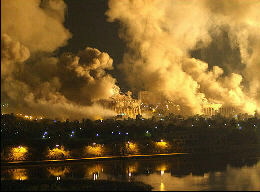


NOTES
1.According to Wallerstein's World Systems Theory, the
West or the "core" forces unequal political and economic opportunity on the poor
nations of Asia, Africa and Latin America, the "periphery" (Schaefer & Lamm
1998:257)
2.The influence of the media is illustrated in a recent study
done in Fiji. Within three years of the introduction of television in 1995 to
the island, the number of female teenagers at risk of eating disorders nearly
doubled. The "thin is sexy" image presented by the American media, made those
who watched television heavily, 50% more likely to describe themselves as fat
and 30% more likely to diet than those who watched it moderately (Kilbourne
1999:135). Thus the cultural ideal, for a woman, that had existed for centuries
changed, following after a "superior" West.
3. Many of the private
Christian Aid agencies put evangelism before aid management as they go about
their business of converting the heathen. The International Christian Aid,
working among Somali Muslims almost provoked riots. World Vision employees used
the threat of withholding food supplies to force Salvadoran refugees into
attending Protestant worship services (Hancock 1989).
4.Alexander (1996)
notes that the ideology of 'Apartheid' in South Africa was, "rich with
references to Christianity, and divine destiny"" and a common belief about
'white supremacy' (Alexander 1996:233).
5.The Bible fails to impress an
objective observer as a "moral" book because of its racist attitude towards all
non-Jews, i.e. the Gentiles. Not only is this idea of race superiority explicit
in the Old Testament, the "Pauline" Jesus [the Gospels were penned after Paul's
epistles and were heavily influenced by his brand of Christianity] according to
the New Testament called non-Jews, "dogs." A gentile woman following after him
asked him for help and he replied, ""It is not right to take the children's
bread and cast it before dogs (Mark 7:27)." Later the woman followed after him
and begged him for the "crumbs". The same "crumbs" that the West hands out to
the "Third World". Over time non-Jew got easily converted to
non-white.
6.The use of alcohol to subjugate Africans and for acquiring
slaves by the colonials, and for the subjugation of American Indians by the
settlers is well documented. The fact that alcohol produces temporary
"normlessness [i.e. anomie]" is a biological fact, as alcohol chemically targets
the specific area of the brain involved in social control. The Bible
states:"Give strong drink to him who is ready to perish and wine to those
that are heavy of heart. Let him drink and forget his poverty and remember his
misery no more(Proverbs 31:6-7)."
7.The IMF classifies countries in
terms of "resource usefulness" to the West. In terms of murder and rape, the
countries of the West are the 'least developed', however that is not the
criteria that the West has dictated (Alexander 1996:80). From 1982 to 1990 the
total amount of money transferred from the "Third World" to the West was around
six times the amount of the Marshall Plan that helped rebuild Europe after World
War II. How come the "Third World" isn't six times or even equally developed"
(Alexander 1996).
8.In the 1990s, U.S cities had an average 'segregation index' of 66.5%.
This means that around 67% of blacks would have to move to make the neighborhood
integrated [Massey & Denton 1996:222]. Christian churches are even more
segregated than U.S cities [Griffin 1999].
The General Social Survey of
1998, conducted by the University of Chicago, reveals [despite the political
incorrectness of advocating segregation], a full 57% of white Christians
[Protestants, Catholics, Orthodox, etc.] explicitly stated that they would
not tolerate a different race in the neighborhood, compared to 28% of white
Jews and 40% of white Buddhists. and 29% of white people with "no religion"
[SPSS cross-tabulation, 1998, General Social Survey].

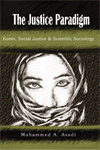
Contrary to the "natural order"
conjectured by Herbert Spencer (1820-1903) in his Social Darwinism, the Theory
of Everything will present objective reality of a normative and positive nature
based on the larger scale governance of the universe. It will transcend all
societies. The Justice Paradigm is the first book that attempts to uncover that
normative order, based upon the Koran and scientific sociology.
The Justice Paradigm
Author: Muhammed A. Asadi
ISBN: 0-595-20896-7
Publisher: Writer's
Club Press
~~Order online~~
www.amazon.com

Bibliography: Abrahamson, Mark. Urban Enclaves. 1996. St. Martin
Press.
Alexander, Titus. Unravelling Global Apartheid. An Overview of World
Politics.1996. Cambridge, MA. Polity Press.
Babbie, Earl. The Practice of
Social Research. 6th ed. 1992. Wadsworth Publishing Co. California.
Blau,
Joel. Illusions of Prosperity: America's Working Families in an age of
Insecurity. 1999. Oxford University Press. New York.
Bullard, Robert D.
Dumping in Dixie.3rd ed. 2000. Westview Press. Oxford.
Chossudovsky, Michel.
The Globalization of Poverty.1997. Zed Books Ltd. London.
Carlyle, Thomas. On
Heroes and Hero Worship, and the Heroic in History- 1918-The Hero as a Prophet.
London.
Castells, Manuel. The City and the Grassroots: A cross-cultural
Theory of Urban Social Movements. Berkeley. University of California Press. 1983
[Chapter 17 & 18].
Delavignette. Robert. Christianity and Colonialism.
1964. Hawthorne Book Publishers. New York.
Danaher, Kevin. 50 Years is
Enough. 1994. South End Press. Boston.
Dower, John. W. Embracing Defeat:
Japan in the Wake of World War II. 1999. W.W. Norton & Co. New
York.
Dubois, W.E.B. The Souls of Black Folk. First Published 1903. Ed. 1995.
Signet Classics, New York.
Fieldhouse, D.K. The West and the Third World.
1999.Blackwell Publishers.
Fraser, Steven. Editor. The Bell Curve Wars. 1994.
Basic Books New York.
Gans, Herbert. The War against the Poor. 1995. New
York. Basic Books.
Griffin, Paul R. Seeds of Racism in the Soul of America.
1999.The Pilgrim Press. Cleveland.
Hadjor, Kofi Buenor. Another America.
1995. South End Press. Boston.
Heineman, Kenneth. God is a Conservative.1998.
New York University Press. New York.
Hancock, Graham. The Lords of Poverty.
1989. Atlantic Monthly Press. New York.
Haley, Alex & Malcolm X. The
Autobiography of Malcolm X.
Koran: Translation from the Arabic.
Kilbourne,
Jean. Deadly Persuasion. 1999. The Free Press. New York.
Chinyelu, Mamadou.
Harlem Ain't Nothin' But a Third World Country. 1999. Mustard Seed Press. New
York.
Macionis, John J. Society: The Basics. 3rd edition. Prentice Hall.
NJ
McNeill, Desmond. The Contradictions of Foreign Aid. 1981. Croom Helm,
London.
Massey, Douglas S & Denton, Nancy A. American Apartheid:
Segregation and Making of the Underclass. 1996. Harvard University
Press.
Parenti, Michael. 1989. The Sword & the Dollar. St. Martin"s
Press. New York.
Shariftz, Jay M & Ott, Stephen J (ed). Classics of
Organization Theory ,5th ed. 2001. Harcourt. New York.
Mills, C. Wright. The
Power Elite. 1956
Rosenberg, Morris. 1968. The Logic of Survey Analysis.
Basic Books Inc. New York.
Riley, John. Abraham Lincoln and the Emancipation
Proclamation. [retrieved
10/10/'00-http://www.thehistorynet.com/NationalHistoryDay/2000/emancipation.htm]
Rodney,
Walter. 1982. How Europe Underdeveloped Africa. Howard University Press,
Washington, DC.
Smith, Tom. The American Family. GSS 1998, University of
Chicago.
Stasiulis, Daiva and Nira Yuval Davis. Editors. 1995. Unsettling
Settler Societies: Articulations of Gender, Race, Ethnicity and Class. Thousand
Oaks, California.
Stone, Clarence. Urban Regimes and the Capacity to Govern.
1993. Journal of Urban Affairs
Schaefer, Robert T & Lamm Robert P.
Sociology. 6th ed. New York. McGraw Hill Companies.
Stoeker, Randy. 1995.
Community, Movement, Organization: The Problem of Identity Convergence in
Collective Action. Sociological Quarterly.
Takaki, Ronald T. Reflections on
Racial Patterns in America. 1982. Ethnicity and Public Policy, University of
Wisconsin (Pp.1-23).
Van Horne, Winston. Editor. Global Convulsions: Race,
Ethnicity and Nationalism at the End of the Twentieth Century. 1997. State
University of New York Press. New York.
Zinn, Howard. 1990. Declarations of
Independance: Cross Examining American Ideology. Harper Perennial. New York.
![]()